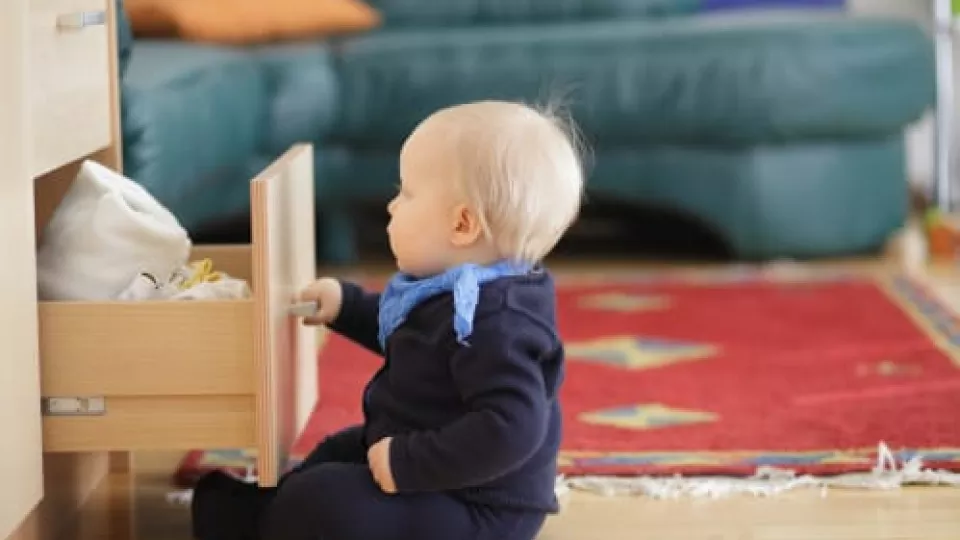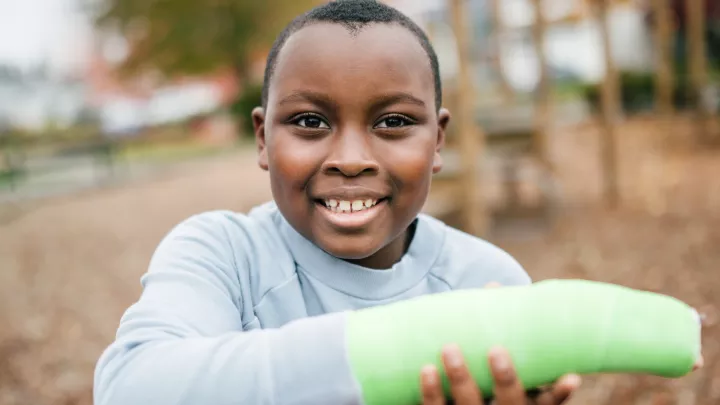
Tips on Avoiding Furniture Tipping
During the Super Bowl 2015 a controversial insurance ad played with a young boy telling the viewers about all the things he was not able to do, because he didn’t grow up, because he died in an accident. Social media erupted with people complaining that the ad was a “downer,” “scary” and disturbed the viewing of the football game.
The company responded by noting that the leading cause of childhood deaths is preventable injuries. One of the accidents vividly portrayed was a television falling onto a floor. I was a Rehab Nurse for 6 years and I remember many stories of children with traumatic brain injuries, either from falling out of windows, motor vehicle accidents, sports injuries and yes, televisions falling onto the head!
I found statistics for the years 1990-2007: 264,200 U.S. kids were taken the emergency room for injuries caused by furniture tip-overs (which include bureaus, dressers, bookcases and televisions). Of this number, 300 children died. And yes, injury is the leading cause of death in children, and one-third of those happen in the home. The danger is pretty obvious to anyone who has seen a baby learn to walk. They cruise the furniture, they reach out and grab onto anything, and toddlers try to climb everything. In the home, bureaus, dressers, bookcases and televisions look attractive. Sometimes there are colorful items on these pieces of furniture and little children are curious explorers.
The way to prevent injuries in the home is to child-proof everything. I remember having a toddler and getting cupboard locks and socket covers, and putting household cleaners and other potential poisons up high. I remember being told to get down at a toddler’s eye level to see what looks handy and dangerous from their height. Securing heavy furniture is also an important safety precaution.
Tips for keeping your home safe:
- Have gates at the top and bottom of the stairs if you have younger children in the house. Do not use walkers. Babies gain momentum and can get into dangerous situations near stairs or crashing into furniture and things can fall onto them
- Furniture needs to be sturdy, stable, and not easy to tip. Check for broken legs on furniture.
- Heavy furniture such as bookcases and bureaus should be secured to the wall with L brackets, especially in earthquake-prone areas!
- Televisions should be on stands low to the ground and likewise attached to the wall with safety straps or L brackets. If you are mounting your TV, make sure to determine the appropriate metal wall mount that can support the weight and size.
- Conceal cords to avoid tripping or potentially pulling down a large piece of furniture on top of your child.
- Never place tempting items on top of the television or on large, heavy furniture, to avoid the toddler climbing up to retrieve the item.
- Heavier items should be on the low shelves of bookcases to help prevent tip-overs.
- Keep stairs clear of items that children (or adults!) can trip on.
- Loose, slippery rugs can be fall hazards, so make sure rugs have rubber grips or are secured with rug tape.
Despite precautions, accidents still happen. Kids will fall and get bruises and scrapes. But if your child suffers a head injury from an accident, seek immediate attention.
- Is an infant
- Loses consciousness
- Won’t stop crying or is hard to console
- Complains of head or neck pain
- Is not acting normally
- Is not walking normally or loses balance
- Is “seeing stars,” or is dizzy or lightheaded
- Has memory loss or slurred speech
- Has nausea or vomiting
- Is confused, listless or irritable
- Is experiencing vision problems or eye irregularity
- Has a seizure
- Has blood or fluid coming from the nose
If you suspect the child has been injured, watch for any signs of dizziness, confusion, abnormal behavior, loss of balance, vision problems, listlessness, irritability, slurred speech, eye irregularity, seizures, blood or fluid coming from the nose or any loss of consciousness.
As a nurse, I am glad that this Super Bowl ad led to a discussion about preventing accidents. As they say in the entertainment business, “There is no bad publicity.” To me, accident prevention and safety are important topics no matter how they are raised. Sometimes it takes an emotional or dramatic presentation to resonate with people. Luckily, the little fellow in that ad was just an actor, and maybe his ad will save a life. Please be safe! Child-proof everything and keep kids healthy.

